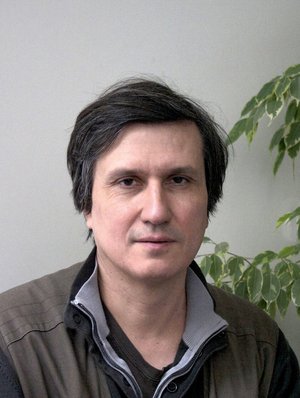Professor Maxim Kontsevich

Professor Maxim Kontsevich is a world leader in geometric aspects of mathematical physics. He works at the Institut des Hautes Études Scientifiques (IHÉS) in Paris and is a member of both the French Academy of Sciences (Académie des Sciences) and the Academy of Europe (Academia Europaea).
The role of mathematics is particularly important in modern theoretical physics due to the escalating cost of experiments and the increasing mathematical complexity of physical theories. It is precisely in this dynamic interface that Professor Kontsevich provides a fundamental contribution to the contemporary development of science. Professor Kontsevich applies ideas and intuitive concepts from physics to make spectacular predictions about mathematics. He uses and builds advanced mathematical tools to establish such predictions, and to generalise and rephrase them in a completely new light and in a broader context, which in turn leads to new and deep insight into physics.
Professor Kontsevich has close relations with researchers at Aarhus University – particularly at the Centre for Quantum Geometry of Moduli Spaces (QGM). His activities include playing an active role in building up the centre, where he makes annual visits and collaborates on an ongoing basis with researchers.
Professor Robbert Dijkgraaf – the current director of the Institute for Advanced Study at Princeton University – was asked in a recent interview to name the best living mathematician in his opinion. He named three, including Professor Kontsevich, justifying his answer as follows: “Kontsevich seems to come from another planet. Conversations with him are like talking to an oracle. He is one large melting pot of ideas. He is very imprecise in his discussions – it is never completely clear as to what he has already proved and what remains conjecture. However, everything finally falls into place in the nicest possible way. He is also fearless. Mirror symmetry or string theory is known among physicists as being one of the most complicated subjects. He just starts calculating without regard to existing theories. Most people give up after working through three examples, but he is not intimidated by mathematics and calmly works through the first twenty cases, after which he sees the structure and solves the problem.”
CURRICULUM VITAE
Professor, Institut des Hautes Études Scientifiques
EDUCATION AND APPOINTMENTS
2009 Foreign Associate Partner, Centre for Quantum Geometry of Moduli Spaces (QGM), a Danish National Research Foundation Centre of Excellence at Aarhus University
2008 Permanent AXA Chair of Mathematics, AXA Research Fund
2007 Distinguished Professor, University of Miami, USA
1997–2002 Distinguished Visiting Professor, Rutgers University–New Brunswick, USA
1995 Professor, IHÉS, Bures-sur-Yvette, France
1993–1996 Professor, University of California, Berkeley, USA
1992 PhD, University of Bonn, Germany
1985 MSc, Department of Mathematics, Moscow State University, Russia
SELECTED PRIZES AND DISTINCTIONS
2014 The Breakthrough Prize in Mathematics
2012 The Fundamental Physics Prize
2012 The Shaw Prize in Mathematical Sciences
2008 The Crafoord Prize
2004 Chevalier de Legion d’Honneur
2002 Member of Académie des Sciences, France
2000 Member of Academia Europaea
1998 The Fields Medal, International Congress of Mathematicians, Berlin
1997 The Henri Poincaré Prize
1997 Prize of the International Congress of Mathematical Physics, Brisbane
1992 Prize of the Mayor of Paris (lst European Congress of Mathematicians)
1992 Otto Hahn Medal, Max Planck Society